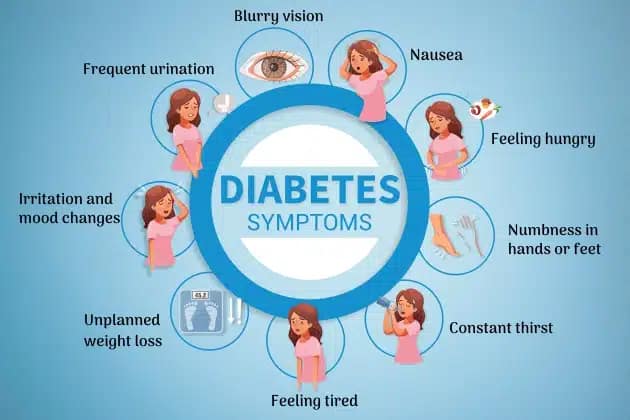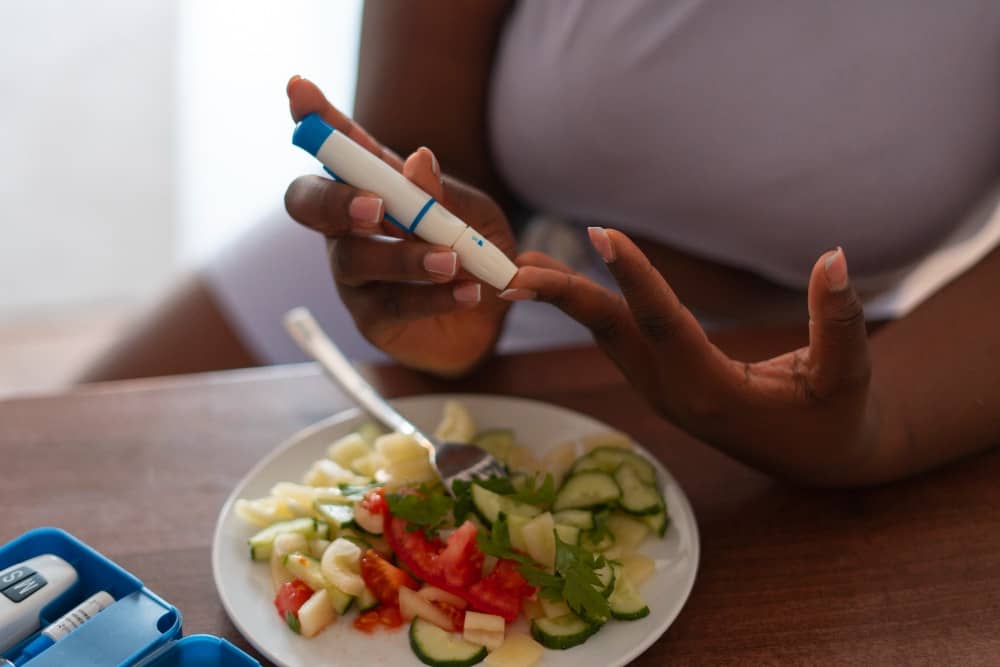What is Diabetes, and How Can You Prevent It?
Globally, 1 in 10 people live with diabetes. The number of people with this condition is expected to increase to 643 million by 2030. It’s clearly a global challenge affecting so many people. That’s why today we’re explaining in detail:
- What is diabetes
- Why it occurs
- And what you can do to prevent it
The short answer:
When someone has diabetes, their blood sugar(blood glucose) is too high. This happens either because the pancreas cannot make enough insulin or the insulin produced is not working effectively.

Source: IDF Diabetes Atlas
Where Does It All Start?
The process begins with your diet. You eat carbohydrates, which are your body’s primary source of energy. When these carbohydrates are digested, they produce glucose (sugar), which is then carried through your bloodstream to your body’s cells to produce energy.
But for this sugar to reach its destination, insulin must be available. When the hormone insulin is unavailable or not working effectively, sugar builds up in your blood instead of going into your cells.
When your body fails to make enough or any insulin at all, causing high blood sugar levels, this is known as Type 1 diabetes. It is classified as an autoimmune disease because your body’s immune system damages the pancreatic cells that produce insulin, causing low or no production of insulin.
Type 2 diabetes happens when your body doesn’t use insulin produced correctly because your body’s cells are not responding to it as they should.
There’s also the aspect of prediabetes, which indicates your blood sugar levels are elevated above the normal range yet not high enough to be classified as type 2 diabetes.
It’s a warning sign that you’re at increased risk of developing type 2 diabetes.
Some women are also at risk of developing gestational diabetes while pregnant. It’s usually caused by the placenta releasing hormones that hinder the work of insulin. This type usually goes away after the pregnancy, but it also puts the woman at risk of Type 2 diabetes.
Symptoms of Diabetes in Women
Diabetes does not have any bias based on race, age, or gender. Any person can develop diabetes. If you are worried about the risk of getting diabetes, pay attention to the following symptoms.
- Frequent urination
- Increased thirst
- Fatigue
- Unexplained weight loss
- Slow-healing wounds
- Blurred vision
- Dry skin
- Darkened skin on certain body parts (common with Type 2 diabetes.)
- Increased infections such as yeast infections and urinary tract infections

Unfortunately, Type 2 diabetes may not present any symptoms at all. You can try to be safe by maintaining a healthy lifestyle and getting tested regularly.
Can You Prevent Diabetes?
Type 1 diabetes can not be prevented because it is an autoimmune condition. However, you can make several lifestyle changes to reduce your chances of developing Type 2 diabetes.
1. Watch What You Eat
Choose a balanced diet rich in fruits, vegetables, whole grains, lean proteins, and phytonutrients. Also, reduce processed foods, sugary drinks, and high-fat snacks because these refined carbohydrates have a high glycemic index and cause spikes in blood sugar levels.
2. Maintain a Healthy Weight
Studies show that obesity and unhealthy weight can cause insulin resistance, which increases the chances of developing Type 2 diabetes. If you want to reduce the risk of developing Type 2 diabetes, try to maintain a healthy weight.
One study found that losing even 5% of your body weight can lead to lower blood sugar levels.
3. Keep Active
When you exercise, you help your body’s cells become more sensitive to insulin. In other words, you help insulin work more effectively. In addition, exercising will keep your body at a healthy weight, which has been known to reduce the risk of diabetes.
4. Limit or Cut Off Alcohol Consumption
It’s simple— alcohol has added sugar, and as we’ve seen, more added sugar puts you at risk for high blood sugar levels.
5. Keep Your Stress Levels Down
Stress, both psychological and physical, plays a significant role in diabetes development and management. Here’s how:
- When stressed, the body releases catecholamines and glucocorticoids, which increase insulin demand and promote insulin resistance.
- These stress hormones can cause blood glucose levels to rise, which is particularly problematic for people with diabetes who already struggle with glucose regulation.
- Chronic stress and persistently elevated stress hormones can lead to long-term insulin resistance, potentially triggering Type 2 diabetes.
6. Sleep Well
Too little sleep has been associated with increased blood sugar levels. If you sleep less than the recommended 7-9 hours, you are at risk of developing insulin resistance, a rise in your blood pressure, and more unmanageable appetite, all of which are risk factors for diabetes.
Management and Treatment Options
Getting diagnosed with diabetes is no doubt scary and full of uncertainty. However, you can hold on to the fact that it is possible to live a fulfilling, healthy, and happy life with proper management.
Now that you have a clear answer to “what is diabetes”, the first step is to seek immediate medical attention because managing diabetes requires a team effort with your physician. More importantly, follow the measures we shared in the previous section to maintain your blood sugar levels as directed by your physician.
Did you find these tips helpful? Let us know in the comments below.






